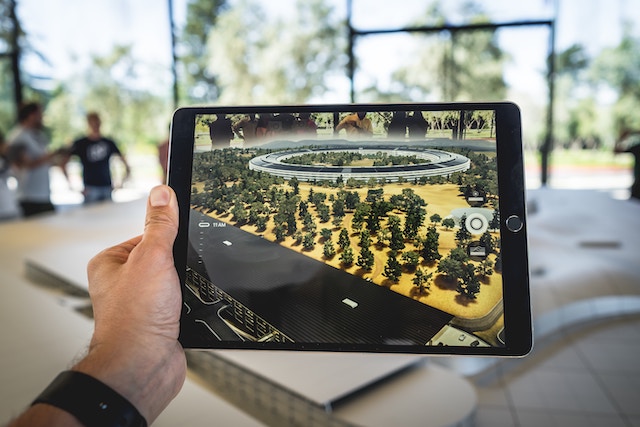
Updated on 10/18/20.
Each year brings its share of trends regarding technologies that push the envelope of what can be achieved in mobile app development. If you want to keep up with the mobile apps industry is vital to take a look at what to expect next year, and this post will help you with it!
We consider these to be among the top trends shaping mobile app development in 2021.
1) Artificial Intelligence: Chatbots and Voice Assistants
The presence of AI in our mobile devices has been around for some years now, bringing automated assistants who can perform tasks and interact with real people, like Siri from Apple. These assistants are improving every year by learning user behaviors to provide a more accurate and personalized experience.
For instance, Google recently launched an AI project called Google Duplex that allows users to ask their phone’s Google Assistant to make reservations by phone call, simulating a human voice, and having a fluent conversation with the person another side of the line.
![]()
The same happens with chatbots, which allow businesses to automate the most frequent interactions saving humans time and reducing cost for the enterprise. It’s estimated that by the end of 2020, 85% of customer interactions will be handled without a human, according to Gartner. Even Facebook announced that last year more than 300,000 bots were used by enterprises over Messenger, and the API to enable chatbots in Whatsapp was introduced a few months ago.
Chatbot platforms make it easier to implement chatbot based solutions, and users are becoming more used to text & voice-based interactions with apps and software in general. It is, in a way, a new frontier in user interfaces, and it will affect the development of custom mobile apps. Be it as a way to enable hands-off interaction with an app, or as a front-end to interact with several back-end systems through a chat-based interaction, or as a way for apps to respond to commands that were triggered through a voice assistant, such as Siri shortcuts. This is why mobile developers must keep a close watch on chatbot and voice assistants.
2) Augmented Reality
Augmented Reality (AR) technologies are not new, but they are becoming better and more pervasive every year, reaching unprecedented levels. Mobile games like Pokémon GO made this so famous that thousands of people interacted with virtual objects and creatures that don’t exist but were displayed over the screen, thanks to AR. However, applications for this technology can go even further in business-critical fields such as security, health, training, industrial maintenance, and more.
For instance, police officers in China are starting to wear smart glasses to identify suspects by face-recognition systems and even spot criminals in the crowd. However, they are still experimenting with it and working to exploit AR in the fight against crime. It is an exciting use case of applying AR in society’s matters, and no doubt, it will occupy an increasingly important place. For instance, according to Statista, the number of AR glasses shipments worldwide will reach around 22.8 million units by 2022.
Apple has recently introduced ARKit 4 to enhance augmented reality experiences in custom apps, based on both the front and rear camera (even better thanks to the LiDAR). Enabling iOS developers to add elements to the camera display in a way that makes those elements appear to inhabit the real world. This has multiple applications in gaming and enterprise information systems where real-world objects such as business cards can be augmented with animated metadata on the fly.
3) The Internet of Things
Nowadays, almost every gadget or household appliance you can think of is being built with Internet access. And not only for checking Red Sox’s last game score on the microwave screen while you heat the waffles, but for connecting with the rest of the house and electronic devices to become a unified system that can be managed by your smartphone.
Jokes aside, the called “smart homes” are starting to grow in number and becoming a game-changing topic for mobile development.
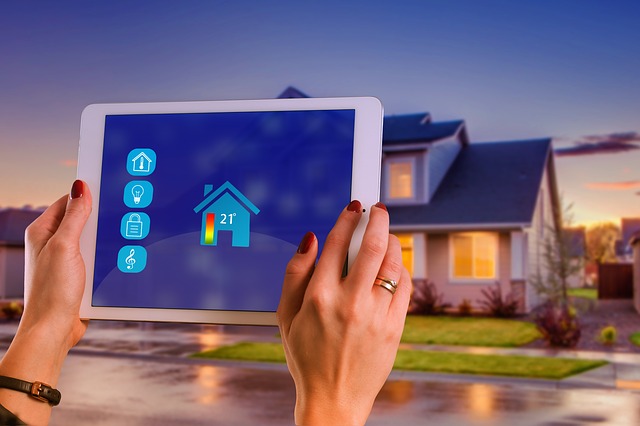
This is because there is no better way to control your house behavior than by using your phone. Imagine reaching (or leaving) your home and being able to unlock doors, open windows, and turn on lights with just one touch. Those things are possible now and keep being improved to allow domestic appliances to perform more complex tasks, managing them with mobile apps such as Apple’s “Home.” In fact, according to IDC, investment in IoT is expected to surpass the $1 trillion mark by 2022, and the development of mobile apps for that purpose goes hand in hand.
In this sense, Apple has introduced the HomeKit library in the iOS SDK, bridging the gap between mobile developers and the sea of IoT protocols, and smart devices and gadgets out there.
4) Mobile Wallets
There was a time when we had to pay for everything in cash. Credit and debit cards appeared, so we didn’t need to carry many bills in our wallets. But there is a common denominator here, the wallet. That thing that we usually have in our pockets didn’t change until now. The wallet of the future will be your mobile phone, and that future is starting to become present.
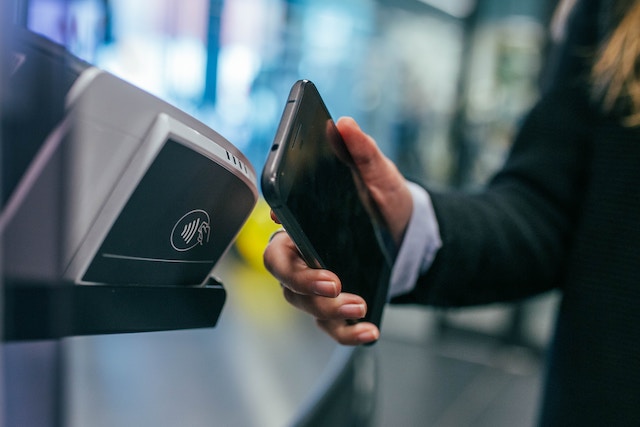
Mobile payment systems such as Apple Pay are growing in usage and popularity. According to eMarketer, about 36% of the worldwide mobile users will use a mobile payment app by the end of this year. Maybe one of the most advanced markets in this sense is China, where upper and middles classes are using mobile wallets for their daily purchases, but the word is that even some beggars use the famous WeChat app to ask for money.
In this context, mobile developers must be ready to add mobile payment capabilities to their toolbox. There’s Apple Pay, but that’s just one in a growing market of mobile-ready payment gateways. Also, as in every other topic, when something becomes more and more popular, related features and capabilities increase in importance. For instance, elements like biometric and multi-factor user authentication in apps should be considered for mobile app developers.
5) Biometric Authentication in Mobile Devices
Using your body to prove that you are yourself is a common feature of new mobile devices. Several research pieces prove that more than 60% of smartphone shipments come with fingerprint scanning capabilities, which keeps growing. This kind of authentication technology is being improved every year, developing a faster and precise scanner that is now even built below the screen.

Biometric authentication in mobile devices is now mainstream. It is used to unlock your phone and log into your bank account or any other sensitive digital space where you expect to have your data protected. Obviously, like any other security measure in the mobile world, it has its flaws, but biometrics combined with classic authentication methods represent the state of the art authentication security. Mobile developers must be ready to include technologies such as FaceID or TouchID capabilities to their mobile apps.
6) Accelerated Mobile Pages (AMP) and Progressive Web Applications (PWA)
Making a fast and user-friendly website that performs well on any device (especially in mobiles) is one of the main goals for developers. People leave sites that take too much time to load, and the same happens with applications. AMP and PWA bring new ways to tackle an old problem.

AMP (Accelerated Mobile Pages) is an open-source library that provides a way to boost a web page’s performance and improve its load time. It was introduced some years ago and gained popularity among web development because of its effectiveness. On the other hand, Progressive Web Applications are web apps that behave just like a mobile native app to create a reliable, fast, and engaging experience. This technology’s advantage is a cheaper development cost compared to developing a traditional native application, but with closer results.
AMP and PWA can be integrated to make the best of both worlds, and that is why mobile devs are working with them, having in mind that most of the web browsing occurs on a mobile device. Not only do they enhance user engagement on your website, but they also improve your visibility over search engines, getting more traffic as a result. Because of this, both technologies form a significant trend in mobile app development for 2021 that you shouldn’t miss.
7) 5G Technology
The next generation of cellular networks is hitting the door, and it is expected to reach the whole market by 2021/22. Experimental tests and researches hold that 5G is faster, cheaper, and more stable than 4G, consuming even less energy. This is why mobile phones are being developed with this brand-new technology to be prepared for its arrival, such as the iPhone 12.

Even though everything is still too recent, mobile apps and the device need to fit the 5G requirements because we are talking about the future network. According to Statista, the number of 5G connections is estimated to reach between 20 million and 100 million by 2021. And a mobile device can quickly lose its user-engagement if it is not suited for that new technology, meaning it won’t have a connection speed as fast as the competence.
So, what does 5G mean for mobile developers? Well, among other things: improved content and especially video-based experiences, including 4k video streaming, but also bandwidth to better handle heavy VR & AR 3D objects. App bundle size is becoming less of an issue, and more users are willing to work on the go as the gap between mobile and wifi connectivity becomes less noticeable.
8) Foldable Displays
The breach between phones and tablets is merging into a new category; the foldable phones. These are starting to become known, and the first models appeared last year, like Samsung’s Galaxy Fold and Huawei Mate X. DSCC (Display Supply Chain Consultants) estimated that in 2019, around 1.65 million foldable OLED panels were shipped worldwide, reaching 60 million units by 2022 what shows a fast grow.
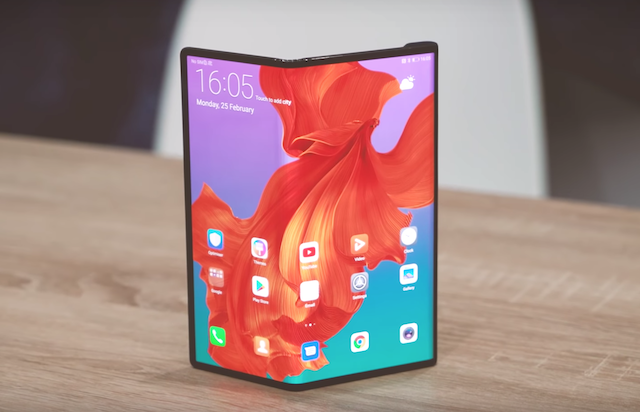
For the time being, this is only a thing on the Android side of things, but it will have implications when developing user interfaces. Mobile apps will probably need to be optimized for that instant change of screen size between the folded version and the unfolded one. It will introduce more complexity and dispersion to the already crowded space of different screen sizes in the Android world, maybe opening more opportunities for players that automate the generation of user interfaces in apps.
9) Beacons & Nearby Networking
Even though the Beacons technology has been established for some time now, it didn’t reach its full potential yet. Beacons are devices that emit BLE (Bluetooth Low Energy) radio signals that smartphones can see and, in most cases, respond to. For instance, stores can take advantage of this by sending day offers or information to customers that walk into the store through their app.

That’s not the only thing BLE could work for. We have created a nearby messaging app based on BLE, and it’s also heavily used in mobile payment scenarios. It remains to be seen whether BLE and beacons, in general, will take off in 2021.
10) Mature hybrid mobile app development frameworks
The iTunes app store has turned 12 this year. After an initial cambrian period of exploration, the market settled several years ago on two leading mobile platforms, iOS and Android. These platforms have matured, and in turn, this has enabled several frameworks such as React-Native, Flutter, Xamarin, Kotlin-Native to evolve over the years. Managing and keeping up with multiple codebases for one mobile app is a challenging problem. Anyone who has struggled to achieve and sustain feature parity providing a common user experience among platforms knows this.
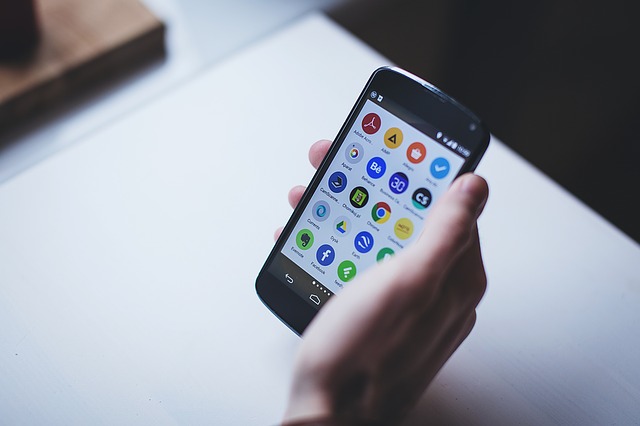
This is not a breaking trend but more like a creep or a steady rise of what represents a viable alternative to native development. The space of user experiences only achievable through native development is slowly but steadily becoming thinner over the years. There will probably always be experiences that only native mobile development will be able to achieve. Still, experience in some hybrid development framework should be part of any mobile app developer’s toolbox this year. Particularly for developing MVPs or any early-stage product release where product-market fit is not yet assured. In these contexts, hybrid development frameworks provide an increasingly concrete path to save money, time, and headaches.
Final thoughts
The list of trends mentioned in this post is based on research and our mobile team’s opinion, but it’s not extensive. Other trends did not make the cut, such as instant apps and blockchain on mobile, but what do you think? What are your thoughts about this year’s trends? Leave a comment below and tell us!

